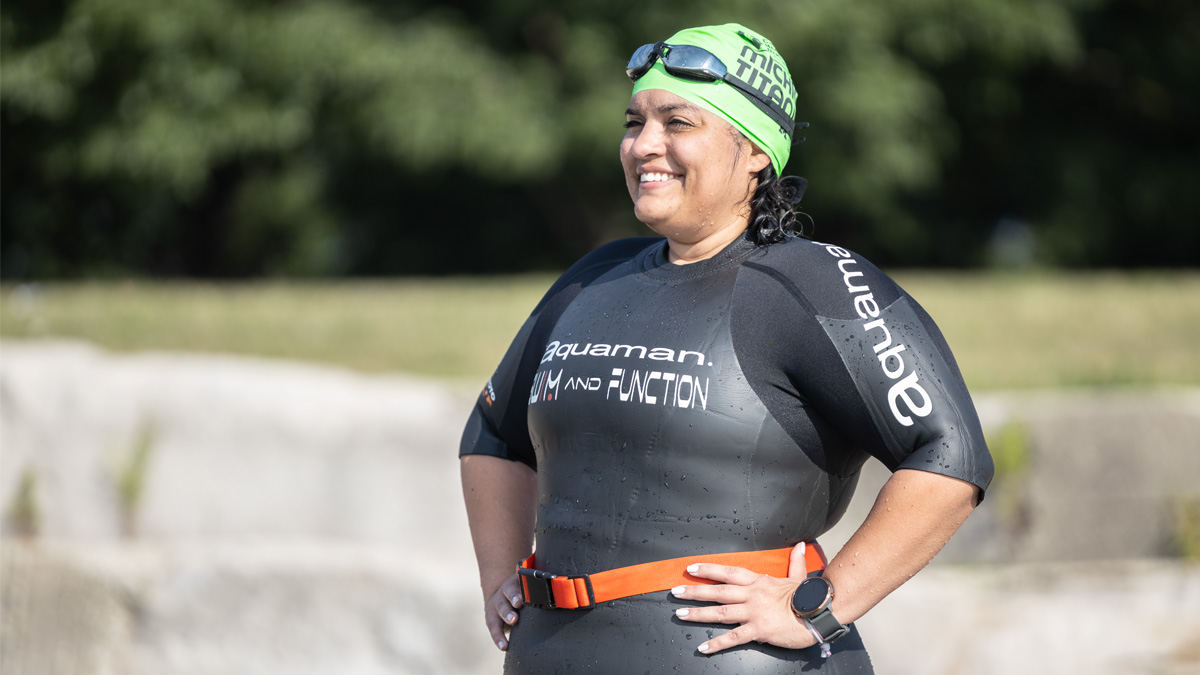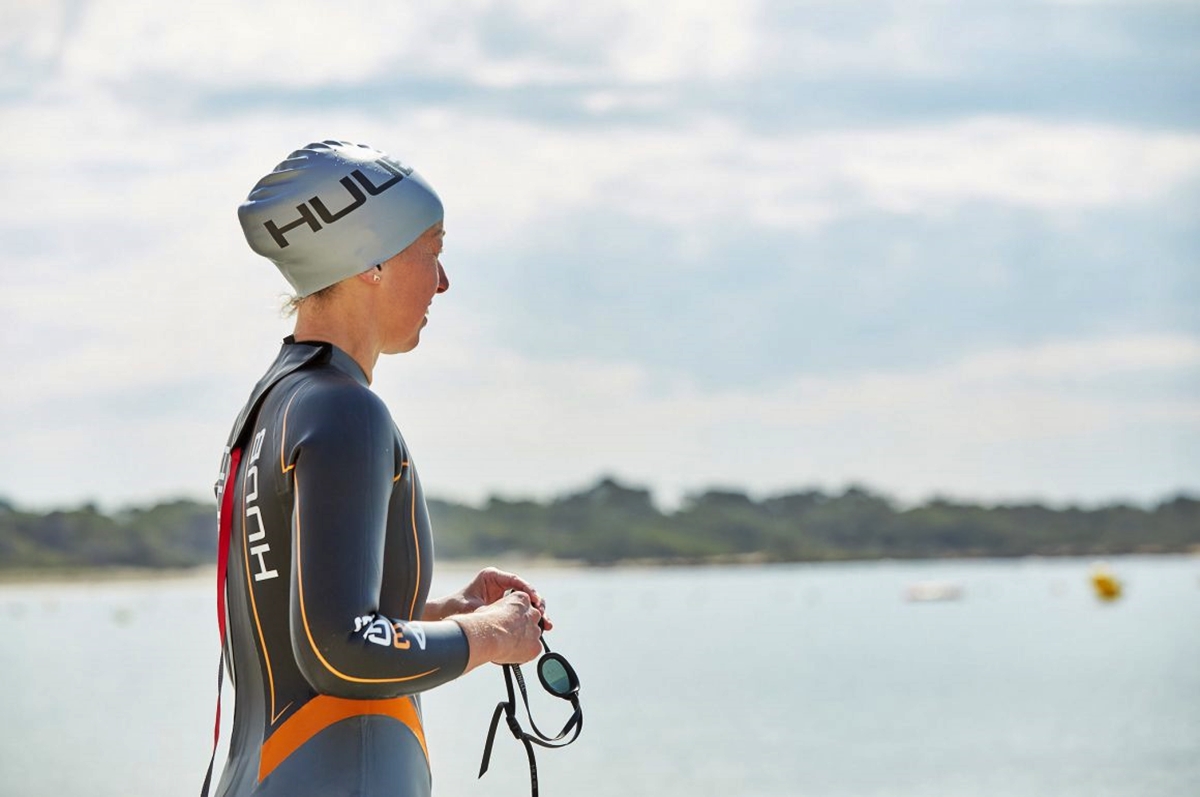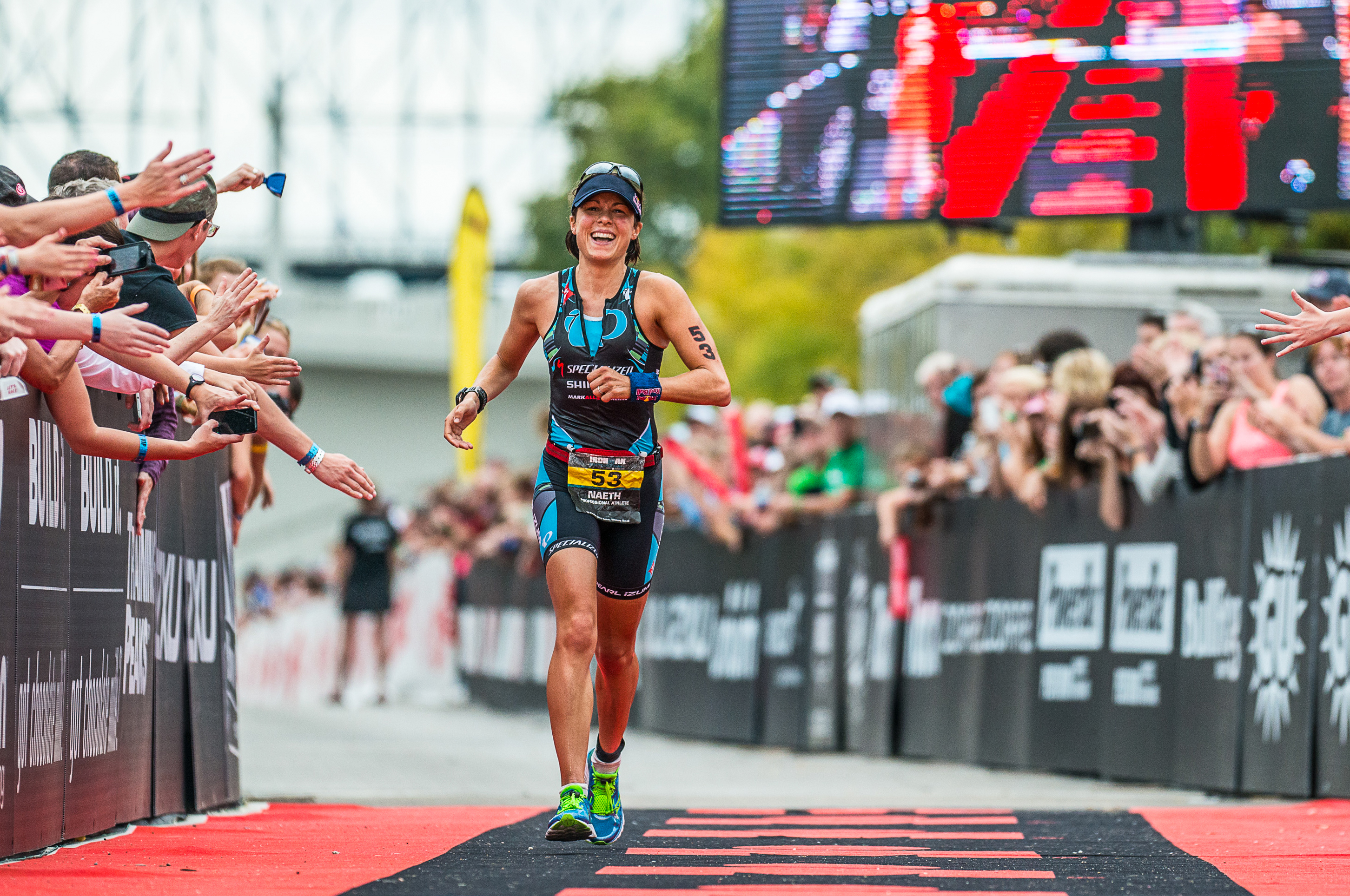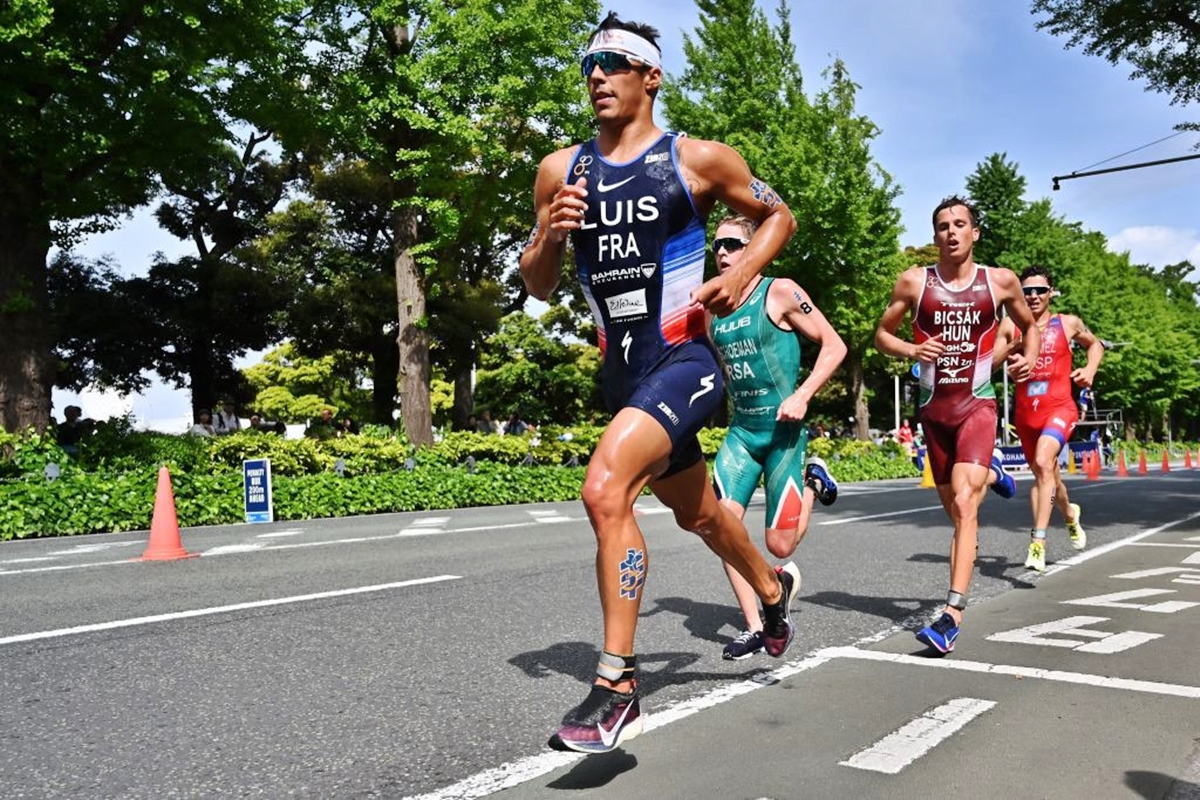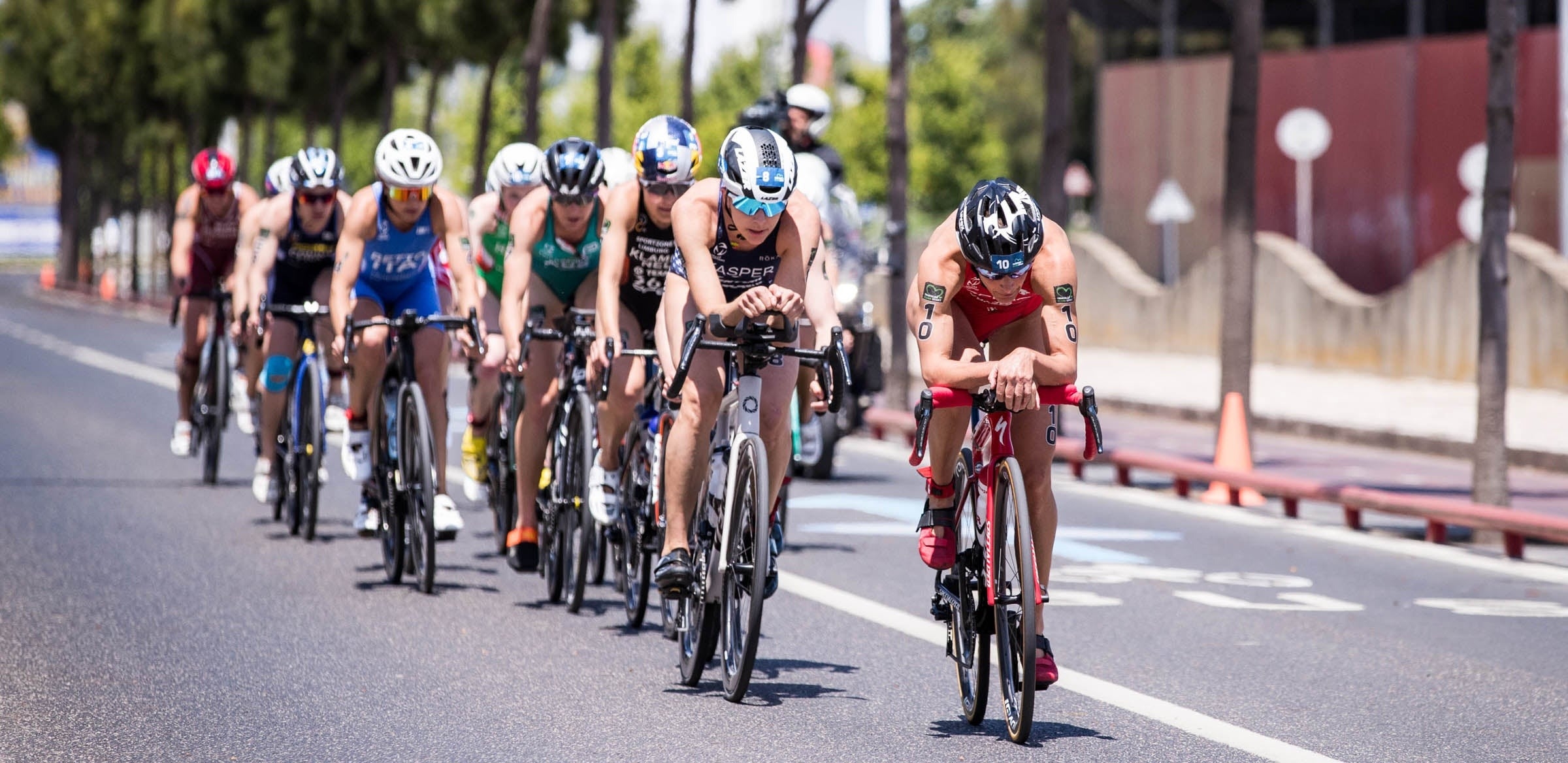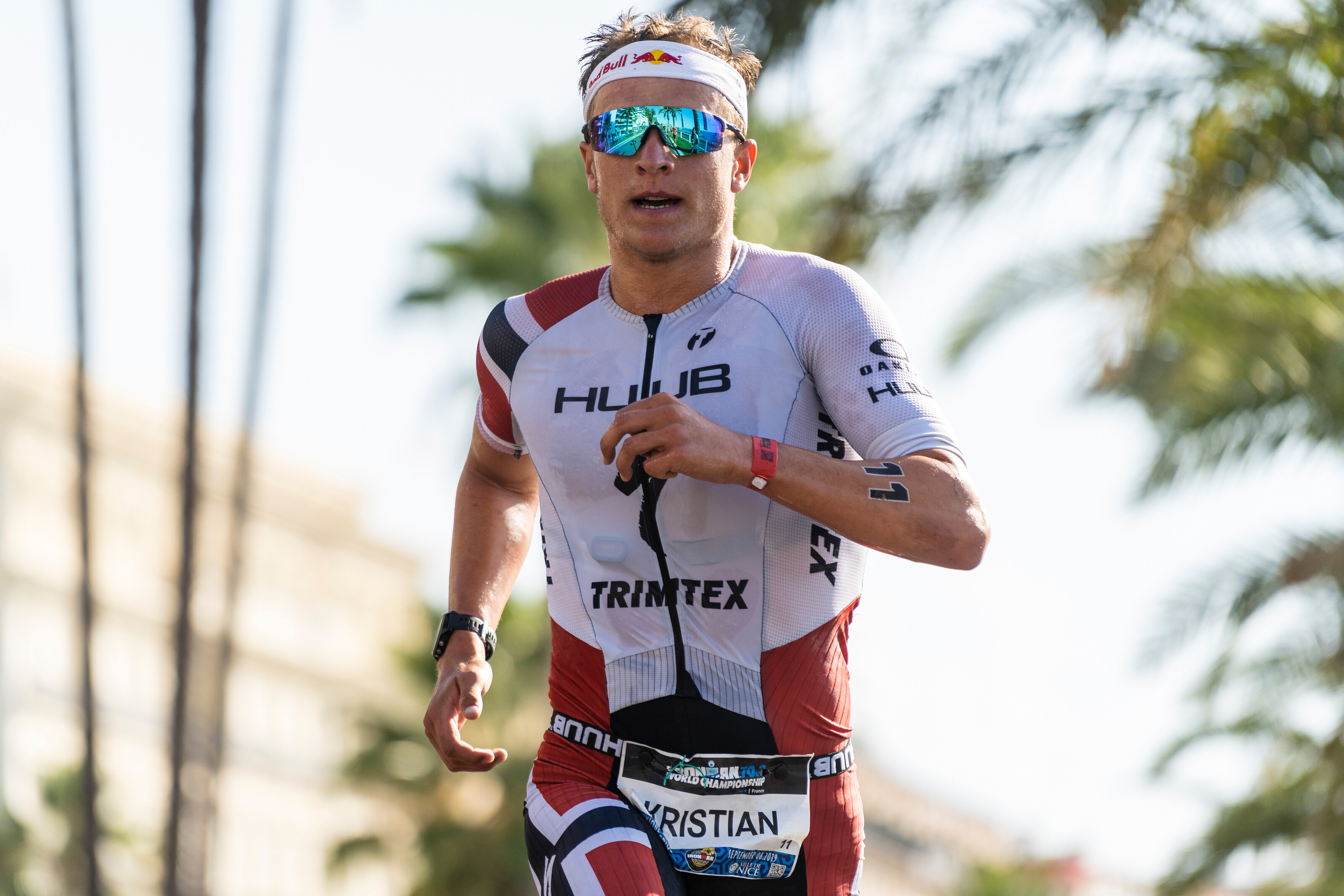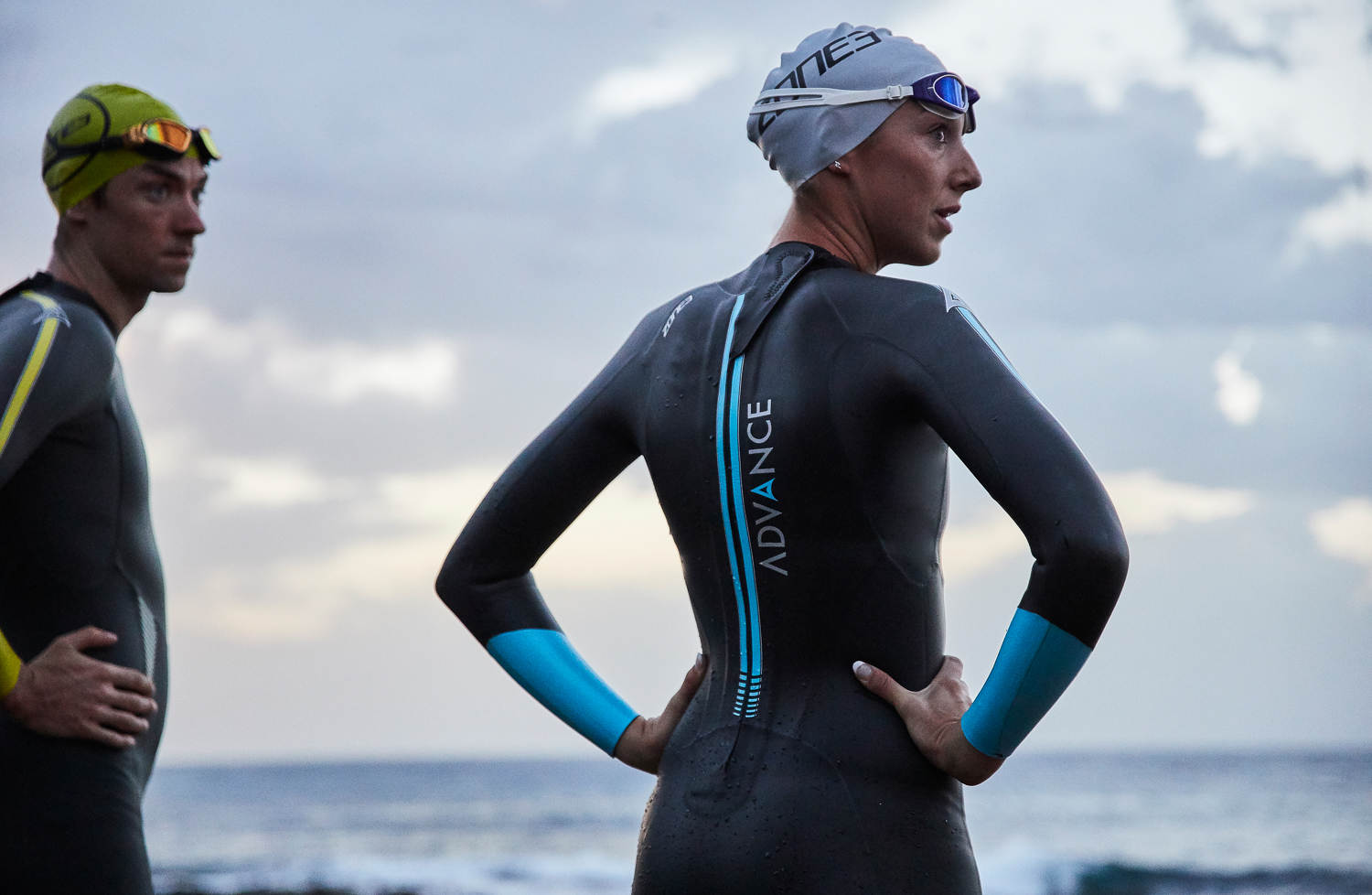

Featured
Where Is The Triathlon Today
Modified: January 22, 2024
Discover where the featured triathlon event is happening today. Join the excitement as athletes compete in this thrilling and challenging sport.
Introduction
Welcome to the exciting world of triathlon, a multisport endurance event that has captured the hearts and minds of athletes worldwide. Combining swimming, biking, and running, triathlon challenges individuals to push their limits and showcase their physical and mental strength. The sport has grown immensely over the years, evolving into a globally recognized competition that demands dedication, discipline, and determination.
Triathlon originated in the 1970s and has since become one of the most popular endurance events in the world. It was born out of a friendly debate among a group of runners, swimmers, and cyclists who wanted to determine which discipline produced the fittest athletes. This friendly competition eventually led to the creation of the first modern triathlon race in San Diego, California in 1974.
Since then, the sport has undergone significant transformations, with the distances and formats evolving to accommodate athletes of different abilities and interests. Initially, the triathlon consisted of a 2.4-mile swim, a 112-mile cycle, and a 26.2-mile marathon run, known as the Ironman distance. However, as the sport gained popularity, shorter distances were introduced to attract a broader range of participants.
Today, triathlon events are categorized into various distances, including sprint, Olympic, half-distance, and full-distance. The sprint distance typically involves a 750-meter swim, a 20-kilometer bike ride, and a 5-kilometer run, making it more accessible to beginners and those looking for a shorter, fast-paced race. Olympic distance races double the swim, bike, and run distances, providing a more challenging experience for athletes. For those seeking even greater endurance tests, half-distance and full-distance triathlons offer longer distances, pushing competitors to their limits.
Organizations such as the International Triathlon Union (ITU) and the World Triathlon Corporation (WTC) have played instrumental roles in promoting and governing the sport globally. The ITU focuses on Olympic-distance and sprint-distance triathlons and organizes the prestigious World Triathlon Series, showcasing the best triathletes in the world. On the other hand, the WTC is best known for its Ironman-branded events, including the iconic Ironman World Championship held in Kona, Hawaii.
Triathlon officially became an Olympic sport in 2000, further elevating its status and attracting more athletes to the discipline. The inclusion of triathlon in the Olympic Games has not only increased its popularity but has also inspired countless individuals to take up the sport and pursue their athletic dreams.
The growing popularity of triathlon can be attributed to various factors, including its appeal as a well-rounded and physically demanding sport, its challenging nature that pushes athletes beyond their comfort zones, and the sense of community and camaraderie among triathletes. The sport has seen a significant increase in participation levels worldwide, with individuals from diverse backgrounds taking part in events ranging from local races to prestigious international competitions.
In the following sections of this article, we will delve deeper into the history of triathlon, explore the different race distances and formats, discuss the challenges faced by triathletes, and highlight the training and coaching aspects of the sport. So buckle up and get ready to dive into the exciting world of triathlon!
History of Triathlon
The history of triathlon can be traced back to the 1970s in San Diego, California. It all began as a friendly debate among a group of athletes from different disciplines, including running, swimming, and cycling. They wanted to determine which sport produced the fittest athletes, and this led to the birth of the first modern triathlon race.
The inaugural event took place on September 25, 1974, and was organized by the San Diego Track Club. It consisted of a 10-kilometer run, 8-kilometer bike ride, and a 500-meter swim in Mission Bay. The race was called the “Mission Bay Triathlon” and attracted 46 participants, including runners, swimmers, and cyclists.
The concept of combining three different endurance sports in a single race was a novel idea at the time. The participants faced many challenges during the race, including the transitions between disciplines, which required quick changes of clothing and equipment. Despite the difficulties, the athletes embraced the challenge and were enthralled by the unique nature of the event.
One year later, in 1975, the first official “Ironman” triathlon was held in Honolulu, Hawaii. The race consisted of a 2.4-mile swim, a 112-mile bike ride, and a 26.2-mile marathon run. It was organized as a competition between athletes from different sports to determine who the fittest athlete was. The event gained attention and popularity when it was featured in Sports Illustrated magazine in 1979. The Ironman triathlon gained global recognition and became synonymous with the ultimate test of endurance.
As the popularity of triathlon grew throughout the 1980s, organizations began to emerge to govern and promote the sport. In 1989, the International Triathlon Union (ITU) was established as the international governing body for the sport. The ITU focused on standardizing the rules and regulations of triathlon and organizing international competitions.
In 2000, triathlon officially became part of the Olympic Games, marking a significant milestone in the sport’s history. The Olympic triathlon consists of a 1.5-kilometer swim, a 40-kilometer bike ride, and a 10-kilometer run. Since then, triathlon has gained even more exposure and has inspired countless individuals to take up the sport.
Today, triathlon has become a global phenomenon, with races held in various locations worldwide. The sport continues to evolve, with different race distances and formats catering to athletes of all abilities and interests. Whether it’s sprint distances for beginners or Ironman distances for the most dedicated endurance enthusiasts, triathlon offers a challenge for everyone.
Overall, the history of triathlon is a testament to the human spirit of adventure, competition, and pushing the boundaries of physical and mental endurance. From humble beginnings in San Diego to a recognized Olympic sport, triathlon has come a long way and continues to captivate athletes around the world.
Evolution of Triathlon Distances
Over the years, triathlon has evolved to include various distances and formats, catering to athletes of different abilities and interests. The sport initially started with a single distance, but as its popularity grew, shorter distances were introduced to attract a broader range of participants.
The first modern triathlon, held in 1974, featured a 10-kilometer run, 8-kilometer bike ride, and a 500-meter swim. This distance laid the foundation for future triathlon races and set the tone for the challenge that participants would face in balancing endurance across three disciplines.
In 1978, the iconic Ironman triathlon was born in Hawaii. This race featured a 2.4-mile swim, a 112-mile bike ride, and a 26.2-mile marathon run. The Ironman distance became the ultimate test of endurance and attracted elite athletes from around the world. Today, this distance is still revered and is known as the epitome of triathlon.
In an effort to make the sport more accessible to beginners and shorter-distance enthusiasts, the sprint triathlon distance was introduced. Sprint-distance triathlons typically consist of a 750-meter swim, a 20-kilometer bike ride, and a 5-kilometer run. This distance provides a shorter and faster race experience, making it popular among beginners and those looking for a quick but challenging event.
The Olympic distance triathlon made its debut at the 2000 Sydney Olympics, further raising the profile of the sport. The Olympic distance consists of a 1.5-kilometer swim, a 40-kilometer bike ride, and a 10-kilometer run. It offers a more challenging experience compared to the sprint distance, attracting athletes looking for a longer and more demanding race.
To cater to the growing interest in middle-distance triathlons, the half-distance or “70.3” triathlon was introduced. This format typically includes a 1.2-mile swim, a 56-mile bike ride, and a 13.1-mile run. The 70.3 distance bridges the gap between the shorter sprint and Olympic distances and the full Ironman distance, providing a challenging race that requires a balance of endurance and speed.
For those seeking the ultimate challenge, the full-distance or “140.6” Ironman triathlon remains the pinnacle of the sport. This distance consists of a 2.4-mile swim, a 112-mile bike ride, and a full marathon run of 26.2 miles. The full-distance triathlon demands an exceptional level of physical and mental strength, testing athletes’ endurance and determination.
As the sport continues to evolve, new formats and variations of triathlon distances have emerged. From off-road events like cross triathlon, which includes trail running and mountain biking, to ultra triathlons that reach even greater distances, the options for triathletes have expanded.
Regardless of the distance, triathlon remains a demanding and rewarding sport that pushes individuals to their limits. The evolution of triathlon distances has not only made the sport more inclusive but has also provided athletes with a range of challenges to suit their abilities and goals.
Triathlon Organizations
Triathlon organizations play a crucial role in promoting and governing the sport, ensuring fair competition, and providing guidance and support to athletes worldwide. These organizations establish rules and regulations, organize races, and contribute to the growth and development of triathlon as a recognized and respected sport.
The International Triathlon Union (ITU) is the international governing body for the sport of triathlon. Founded in 1989, the ITU’s primary role is to oversee and regulate the sport at the international level. It sets the standard rules and regulations for triathlon races, including distance requirements, race formats, and competition guidelines.
One of the ITU’s flagship events is the World Triathlon Series (WTS), which features a select number of elite races held in various locations around the world. The WTS brings together the world’s top triathletes, showcasing their skills and providing a platform for intense competition.
In addition to the WTS, the ITU also organizes various continental and regional championships, including the European Triathlon Championships, Asian Triathlon Championships, Pan American Games, and the African Triathlon Union Championships. These events serve as qualifying races for international competitions, such as the Olympic Games and the ITU World Triathlon Grand Final.
The World Triathlon Corporation (WTC) is another significant organization in the triathlon world. It is best known for its Ironman-branded events, including the renowned Ironman World Championship held in Kona, Hawaii. The WTC organizes a series of Ironman and Ironman 70.3 races worldwide, attracting both professional and amateur triathletes from around the globe.
Ironman events are known for their challenging race courses and demanding race distances, consisting of a 2.4-mile swim, a 112-mile bike ride, and a full marathon run of 26.2 miles. Ironman races are highly regarded and can often serve as qualifiers for the Ironman World Championship.
Aside from the ITU and WTC, there are numerous regional and national triathlon organizations that promote and support the sport at a local level. These organizations are responsible for organizing races, providing coaching and training resources, and fostering a sense of community among triathletes in their respective regions.
Furthermore, these organizations often offer certification programs for triathlon coaches, ensuring that athletes have access to qualified individuals who can guide them in their training and preparation for races. They also provide resources for beginners, including training plans, tips, and advice on equipment, nutrition, and race preparation.
Triathlon organizations play an essential role in enhancing the overall experience and development of the sport. They strive to create a fair and inclusive environment for participants of all levels, from beginners to elite athletes. Through their efforts, they continue to raise the profile of triathlon and inspire individuals to pursue their passion for the sport.
Triathlon as an Olympic Sport
Triathlon achieved a significant milestone in 2000 when it was included as an Olympic sport in the Sydney Olympic Games. This recognition catapulted triathlon into the global sporting spotlight, elevating its status and attracting even more athletes to the sport.
The inclusion of triathlon in the Olympics was a testament to the growth and popularity of the sport. It provided a platform for elite triathletes to compete on the world stage and showcased the diverse skills required in swimming, cycling, and running.
The Olympic triathlon consists of a 1.5-kilometer swim, a 40-kilometer bike ride, and a 10-kilometer run. The race takes place in an Olympic venue, often with spectator-friendly courses that allow the audience to witness the excitement and drama of the competition up close.
Being an Olympic sport has had a profound impact on triathlon, both in terms of participation and visibility. The Olympic Games draw massive global attention, and the inclusion of triathlon has introduced the sport to millions of viewers around the world.
Since its inclusion in the Olympics, triathlon has experienced a significant increase in participation levels. The allure of competing in the same discipline as Olympic athletes has inspired many individuals to take up the sport and pursue their own triathlon dreams. This influx of new athletes has contributed to the growth and expansion of triathlon events at all levels, from local races to international competitions.
Moreover, the Olympic event serves as a pinnacle of achievement for triathletes. It provides a goal for aspiring athletes to strive towards, with the opportunity to represent their country and compete against the best triathletes in the world. The Olympic triathlon has witnessed intense battles and unforgettable performances, showcasing the incredible skill, endurance, and determination of athletes in this multi-discipline sport.
The visibility and recognition that triathlon receives as an Olympic sport have also had a positive impact on sponsorship and investment in the sport. Companies and brands have been eager to associate themselves with the Olympic rings and support triathletes, leading to increased opportunities for athletes to secure sponsorship deals and financial support.
Additionally, the Olympic status of triathlon has raised the sport’s profile within national sports organizations and governments. This recognition has facilitated the development of training programs, funding initiatives, and resources to support the growth of the sport at the grassroots level.
Triathlon as an Olympic sport has truly changed the landscape of the sport, extending its reach to a broader audience and inspiring individuals of all ages and abilities to become a part of the triathlon community. The Olympic Games have become a showcase for the sport, propelling triathlon into the global sporting consciousness and solidifying its place as a challenging, exciting, and iconic discipline.
Popularity and Participation
Triathlon has experienced a remarkable surge in popularity over the years, attracting a wide range of participants from all walks of life. The sport’s unique combination of swimming, cycling, and running has captivated athletes worldwide, making triathlon one of the fastest-growing endurance sports.
One of the factors contributing to the popularity of triathlon is its appeal as a well-rounded and physically demanding sport. Triathlon challenges athletes to excel in multiple disciplines, fostering a sense of versatility and versatility that appeals to those seeking a diverse and comprehensive fitness experience.
The inclusive nature of triathlon has also played a significant role in its growing popularity. Races are open to individuals of all abilities, from beginners to seasoned athletes. Many events offer multiple race distances, making it accessible for newcomers to the sport as well as providing more challenging options for experienced triathletes.
The camaraderie and sense of community in triathlon have also contributed to its widespread appeal. Triathletes often form strong bonds with fellow competitors, sharing experiences, advice, and encouragement throughout their journey. This supportive atmosphere fosters a welcoming environment for newcomers and creates a sense of belonging within the triathlon community.
The growing popularity of triathlon is evident in the increasing participation numbers at races around the world. Local races attract participants of all ages, from children competing in youth triathlons to older adults taking part in age-group events. The sense of accomplishment and personal achievement that comes with completing a triathlon has become a driving force behind this surge in participation.
Moreover, the exposure that triathlon receives through televised events, social media, and mainstream media coverage has contributed to its rising popularity. The achievements of elite triathletes in high-profile races, such as the Olympics and the Ironman World Championship, inspire and motivate others to take up the sport and push their own boundaries.
The accessibility of triathlon training and coaching resources has also played a vital role in attracting new participants. From online training programs to local triathlon clubs and coaching services, aspiring triathletes have access to guidance and support to help them develop the skills and fitness needed to compete in a triathlon.
Furthermore, the health and wellness benefits associated with triathlon have contributed to its appeal. Triathlon training requires a combination of aerobic fitness, strength, and endurance, providing a holistic approach to physical fitness. The sport promotes an active and balanced lifestyle, with participants often incorporating nutritious eating habits and stress management techniques into their training routines.
Overall, the increasing popularity of triathlon can be attributed to its challenging and fulfilling nature, the supportive community it fosters, and the accessibility of training resources. As the sport continues to grow, it is poised to attract even more participants, inspire new generations of triathletes, and create lifelong memories and achievements for athletes around the world.
Elite Triathlon Competitions
Elite triathlon competitions showcase the pinnacle of the sport, bringing together the world’s top triathletes to compete at the highest level of skill and athleticism. These events attract global attention and provide a platform for athletes to showcase their speed, endurance, and tactical prowess.
The International Triathlon Union (ITU) World Triathlon Series (WTS) is one of the most prestigious elite triathlon competitions. It consists of a series of races held in different locations around the world, culminating in a grand final event. The WTS showcases the best triathletes from various nations and offers intense and exciting races in both the sprint and Olympic distances.
The ITU World Triathlon Grand Final is the pinnacle event of the WTS calendar, bringing together the top-ranked triathletes in the world. This event determines the World Champions in the various age-group categories as well as crowning the overall elite World Champions.
Another notable elite competition is the Ironman World Championship, held annually in Kona, Hawaii. This event is the culmination of a year-long qualification process, with athletes from around the world vying for a spot on the starting line. The Ironman World Championship is renowned for its demanding race course and serves as a showcase for the ultimate test of endurance in triathlon.
In addition to these prominent competitions, there are numerous other international triathlon events that attract elite athletes and offer significant prize purses. These events draw top-ranked professionals who are known for their exceptional speed, endurance, and strategic race tactics.
Elite triathlon competitions feature intense competition, with tactics playing a crucial role in determining the outcome. Athletes must demonstrate mastery in multiple disciplines and possess the ability to strategize during races to gain an advantage over their rivals. They must efficiently manage their transitions between swimming, cycling, and running, optimizing their time and energy expenditure to achieve the best possible result.
These events also showcase the incredible physical and mental resilience of elite triathletes. Competing at the elite level requires hours of dedicated training, meticulous preparation, and a deep understanding of the body’s capabilities. Athletes push their limits and endure through physical and mental fatigue, showcasing their discipline and commitment to the sport.
The elite triathlon competitions not only provide a stage for impressive athletic performances, but they also inspire and motivate triathletes of all levels. The achievements and stories of elite athletes serve as a source of inspiration for aspiring triathletes, spurring them on to reach new heights in their own triathlon journey.
Moreover, these elite competitions help to elevate the status and visibility of triathlon as a sport. They attract media coverage and provide global exposure, raising awareness of the discipline and further fueling its popularity and growth.
Overall, elite triathlon competitions are the pinnacle of the sport, showcasing the athleticism, determination, and tactical skills of the world’s top triathletes. These events inspire and captivate audiences, pushing the boundaries of what is possible in endurance sports and solidifying triathlon’s position as an exciting and highly competitive discipline.
Challenges Faced by Triathletes
Triathlon is a demanding and multifaceted sport that presents its participants with a unique set of challenges. Triathletes must navigate physical, mental, and logistical hurdles to pursue their passion and excel in this grueling endurance event.
One of the primary challenges faced by triathletes is the rigorous training required to prepare for the three disciplines: swimming, cycling, and running. Balancing the intensity and volume of training in each discipline can be physically and mentally demanding. Triathletes need to dedicate time and effort to develop the necessary endurance, strength, and technique in all three sports.
Transitioning between the three disciplines during a race can also pose a challenge. The transitions require quick changes of clothing and equipment and efficient time management. Triathletes need to practice these transitions to ensure a smooth and seamless shift between swimming, cycling, and running, while minimizing time lost in the process.
Another significant challenge in triathlon is the mental aspect of competing. Endurance events like triathlon require mental strength and resilience. Triathletes must push through fatigue, doubt, and discomfort to perform at their best. Strategies such as positive self-talk, visualization, and goal setting can help triathletes overcome mental obstacles and stay focused during races.
Nutrition and hydration are vital considerations in triathlon, particularly in longer-distance races. Proper fueling and hydration strategies are crucial to maintain energy levels and prevent fatigue. Finding a balance between consuming enough calories and fluids to sustain performance while avoiding digestive issues can be an ongoing challenge for triathletes.
Logistics and time management can also present challenges for triathletes. Training for three disciplines requires careful planning and organization of training sessions. Managing work, family commitments, and other responsibilities alongside training can be a juggling act. Triathletes must find ways to prioritize their training while maintaining a healthy balance in their lives.
Injury prevention and management are additional challenges that triathletes face. The repetitive nature of training and the impact of three different sports on the body increase the risk of overuse injuries. Triathletes must listen to their bodies, incorporate appropriate rest and recovery periods into their training, and seek professional guidance when needed.
Financial considerations are also a challenge for many triathletes. Triathlon requires proper equipment, race entry fees, travel expenses, and coaching or training resources. Meeting these financial demands can be a hurdle, especially for amateur or aspiring triathletes who may not have access to sponsorship or financial support.
Lastly, balancing training and racing goals with personal and professional commitments can be a challenge for triathletes. Many triathletes lead busy lives outside of the sport, juggling full-time jobs, families, and other responsibilities. Managing these commitments alongside the dedication required for training and racing can be both physically and emotionally demanding.
Despite the challenges they face, triathletes are driven by their love for the sport and their desire to push their limits. They embrace the obstacles and find ways to overcome them, drawing on their dedication, resilience, and support from the triathlon community to rise above the challenges and achieve their goals.
Training and Coaching in Triathlon
Effective training and coaching are essential elements for triathletes aiming to improve their performance and achieve their goals. Triathlon requires a multidisciplinary approach, encompassing swimming, cycling, and running, along with transitions and overall fitness. Proper training and guidance can help triathletes develop the necessary skills, endurance, and race strategies to excel in these three disciplines.
Training for triathlon involves a delicate balance between building endurance, developing sport-specific skills, and preventing overuse injuries. Triathletes typically follow structured training plans that incorporate periodization, which involves dividing the training year into specific phases to focus on different aspects of fitness.
Swimming is often considered the most technical discipline of triathlon. Efficient swimming technique is crucial for conserving energy and maintaining a strong pace throughout the swim leg. Triathletes benefit from working with swim coaches who can provide stroke analysis, drills, and tailored training sessions to improve technique and increase speed and endurance in the water.
Cycling is a critical aspect of triathlon, and triathletes benefit from training both on the road and indoor on stationary bikes. Building cycling strength and endurance requires a combination of long rides, interval training, and hill repeats. Triathletes also benefit from working with cycling coaches who can provide guidance on bike fit, proper form, and strategies to maximize performance on race day.
Running is the final leg of a triathlon, and it requires specific training to develop speed and endurance while managing fatigue accumulated from swimming and cycling. Triathletes often incorporate interval training, tempo runs, and long-distance runs into their training plans to improve running performance and adapt to the demands of the multisport event. Running coaches can provide valuable insights into proper running technique, injury prevention, and optimizing running performance.
In addition to sport-specific training, triathletes work on the transitions between swimming, cycling, and running. Transition training involves practicing the necessary equipment changes, such as quickly swapping from a wetsuit to cycling gear or efficiently changing shoes and managing nutrition during transitions. Coaches can guide triathletes through transition drills to improve speed and efficiency during these critical moments of the race.
Coaching plays a vital role in triathlon, providing personalized guidance, accountability, and expertise to help triathletes reach their full potential. Triathlon coaches design individualized training plans based on each athlete’s goals, fitness level, and availability. They monitor progress, adjust training as needed, and provide feedback and support to optimize performance.
Coaches also provide valuable insight into race strategy, pacing, and mental preparation. They help triathletes understand the demands of each race distance, analyze race courses, and create race plans tailored to each individual’s strengths and weaknesses. Race-day coaching and support help triathletes navigate the challenges of competition, make informed decisions, and maximize their performance.
Training and coaching resources for triathletes have expanded significantly in recent years. Online platforms provide access to training plans, workout tracking, and educational resources. Local triathlon clubs offer community support, group training sessions, and camaraderie among fellow athletes. Triathlon coaching certifications ensure that coaches have the necessary knowledge and expertise to guide athletes effectively.
Ultimately, the training and coaching journey in triathlon is a partnership between the athlete and the coach. With dedication, guidance, and continuous improvement, triathletes can develop the physical and mental strengths needed to thrive in this demanding multisport discipline.
Triathlon Equipment and Gear
Triathlon is a gear-intensive sport that requires specific equipment to enhance performance and ensure comfort and safety throughout each discipline. From swimwear and wetsuits to bikes and running shoes, triathletes rely on a range of specialized gear to enhance their training and racing experience.
One of the essential pieces of equipment for triathletes is a reliable and well-fitted wetsuit. Wetsuits provide buoyancy, insulation, and hydrodynamics in the water, improving swim performance. They are particularly beneficial in open water swims where water temperatures may be colder. Triathlon-specific wetsuits often feature thinner material around the arms and shoulders to facilitate a full range of motion during the swim leg.
Swimwear designed for triathlons is another essential piece of gear. Triathlon-specific swimwear is typically streamlined, made of durable fabrics, and provides a comfortable fit. Men typically wear triathlon-specific swim trunks or snug-fitting swimsuits, while women usually opt for one-piece suits or sports bikinis that allow for ease of movement.
Cycling plays a significant role in triathlon, and having a suitable bike is crucial. Triathlon bikes, also known as time trial (TT) bikes, are designed to minimize wind resistance and optimize aerodynamics. These bikes feature aero handlebars, deep-section wheels, and frame geometry specific to triathlon. However, for beginners or those on a budget, a road bike with a comfortable fit and efficient gear ratios can also be suitable for triathlon races.
In addition to the bike, triathletes require a few cycling accessories. A bike helmet is a non-negotiable safety item and is mandatory in all triathlon races. Triathlon-specific helmets are designed to be aerodynamic and offer ventilation to keep the head cool during the ride. Proper cycling shoes and pedals are also essential for efficient power transfer and control on the bike leg.
Running shoes are another critical piece of equipment for triathletes. Triathlon-specific running shoes are lightweight, breathable, and provide adequate cushioning for the run leg. Quick-drying and drainage features help eliminate water and moisture to prevent discomfort during transitions. It is recommended to have a well-fitted pair of running shoes specifically designated for triathlon races to avoid blisters or injuries.
Triathlon gear also includes clothing designed for all three disciplines. Triathlon suits, often referred to as tri suits, are one-piece or two-piece outfits that can be comfortably worn throughout the race. These suits are made of moisture-wicking, quick-drying fabric and feature a built-in chamois for added comfort during the bike leg.
Other essential gear for triathletes includes a race belt to hold the race number during the run, a transition bag to organize and transport gear, and nutrition accessories such as energy gels, hydration belts, and water bottles to fuel the body during training and races.
While these are some of the key gear items for triathletes, the specific needs of each individual may vary based on race distance, experience level, and personal preferences. It is essential to invest in quality gear that fits well and meets the requirements of the races being participated in.
Triathlon gear can be a significant investment, but it is important to remember that quality equipment and gear can enhance performance, comfort, and overall race experience. Taking the time to research and invest in the right gear can make a notable difference in a triathlete’s training and racing journey.
Conclusion
Triathlon is a dynamic and exhilarating sport that challenges athletes both physically and mentally. Over the years, the sport has grown in popularity, attracting individuals from all walks of life, and captivating audiences worldwide. From its humble beginnings in the 1970s to its recognition as an Olympic sport, triathlon has come a long way and continues to evolve.
The history of triathlon showcases the determination and competitive spirit of athletes who sought to push the boundaries of their respective sports. From the first modern triathlon race in San Diego to the inclusion of triathlon in the Olympic Games, the sport has achieved remarkable milestones and gained global recognition.
The popularity of triathlon can be attributed to its all-encompassing nature, providing a well-rounded and challenging experience. The accessibility of multiple race distances ensures that individuals of all abilities and interests can participate and enjoy the sport. Triathlon’s sense of community and camaraderie, coupled with its positive impact on physical fitness and overall well-being, have contributed to its ever-increasing popularity.
Elite triathlon competitions showcase the highest level of skill, athleticism, and strategy. Through these events, the best triathletes in the world inspire and motivate others, pushing the boundaries of what is possible in this demanding discipline. These competitions also serve as platforms for triathletes to exhibit their dedication, resilience, and unwavering determination.
Challenges are an inherent part of triathlon, and triathletes must overcome physical, mental, and logistical hurdles. The support of coaches, proper training plans, and a commitment to continuous improvement help triathletes navigate these challenges and reach their full potential.
From wetsuits to running shoes, triathlon gear plays a crucial role in the performance, comfort, and safety of athletes. Specialized equipment and clothing designed for triathlon enhance the experience, providing aerodynamics, comfort, and convenience, while ensuring athletes are well-prepared for each discipline.
As triathlon continues to grow, it inspires individuals to embrace the sport, challenge themselves, and pursue their athletic dreams. The sense of accomplishment, the friendships forged, and the personal growth experienced through triathlon make it a truly rewarding and fulfilling discipline.
Whether competing in a local sprint triathlon or striving for a podium finish in an Ironman event, triathletes embody the pursuit of excellence, resilience, and the spirit of endurance sports. The journey in triathlon is one of self-discovery, self-improvement, and the celebration of the human spirit.
So dive into the world of triathlon, embrace the challenges, and discover the incredible rewards that come with pushing beyond your limits. Whether you are a beginner or an experienced triathlete, the excitement, the triumphs, and the sheer joy of participating in this multidimensional sport are waiting for you.
